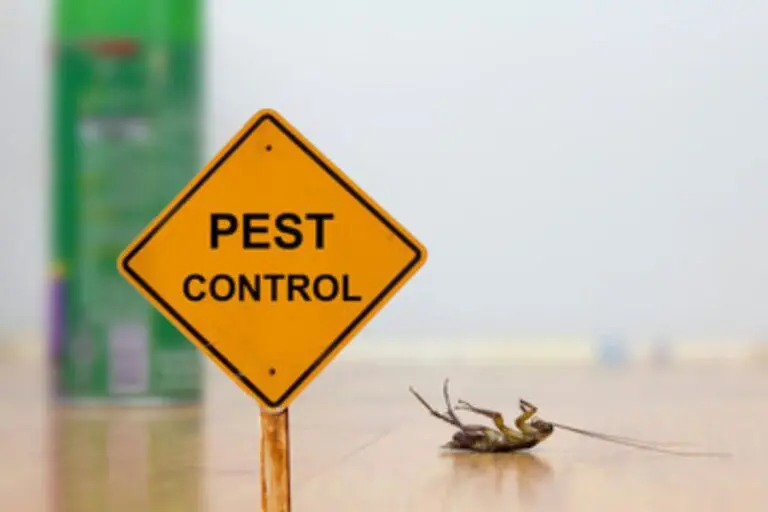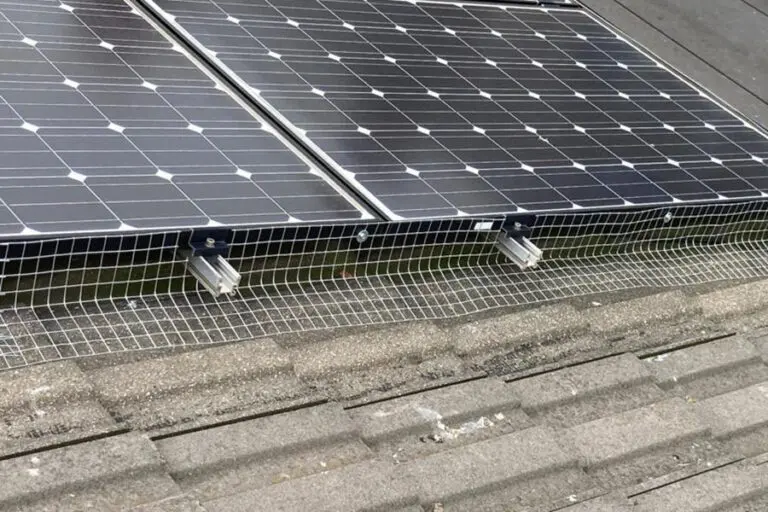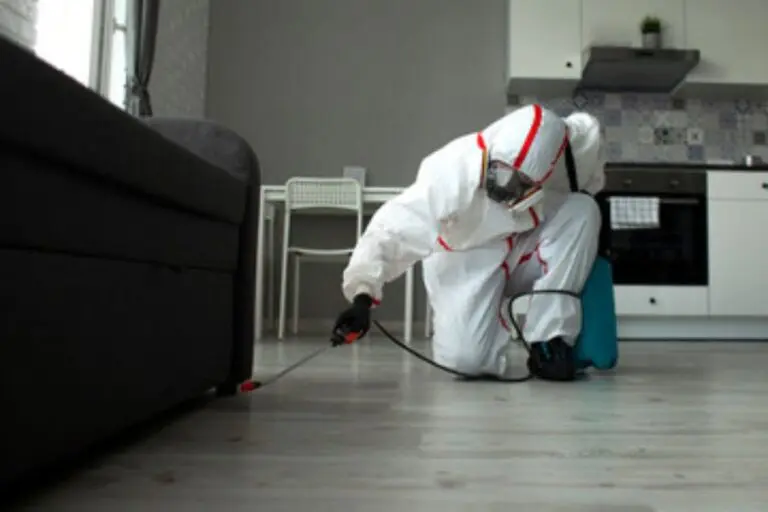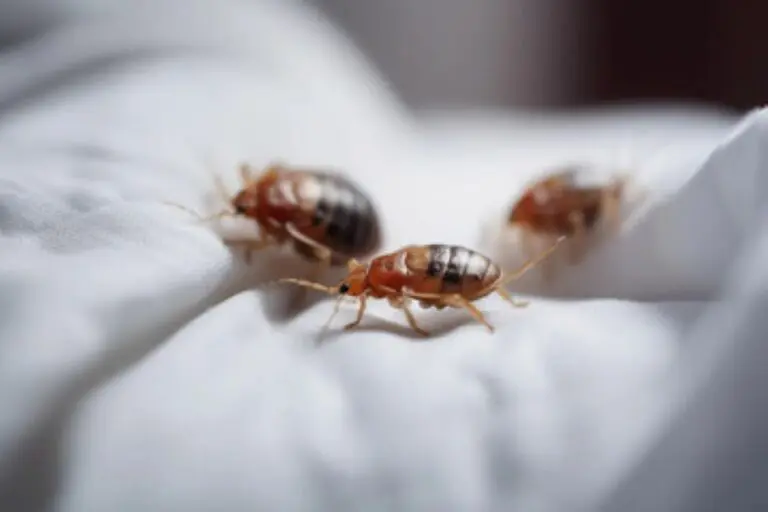Dealing with a Surprising Ant Infestation: A Comprehensive Guide to Identifying, Controlling, and Preventing Ants in Your Home
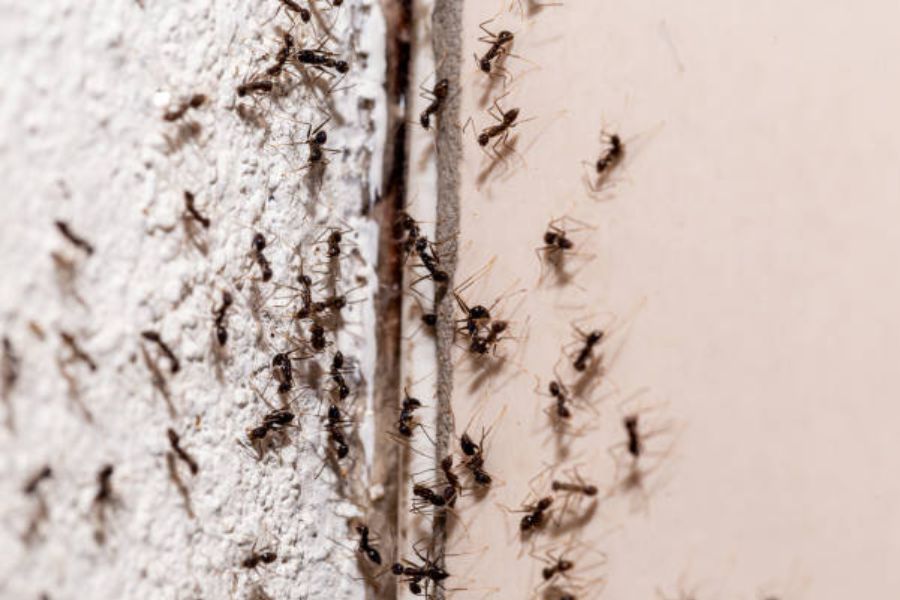
An unexpected ant infestation can quickly turn from a minor annoyance to a significant problem in any home or garden. Ants are notorious for their ability to invade spaces, from kitchens to bathrooms, in their search for food and shelter. Understanding ant behaviour, recognising the signs of an infestation, and knowing the best ways to address and prevent them can help keep your home ant-free. In this guide, we’ll cover everything you need to know to manage an ant infestation effectively.
What Are the Signs of an Ant Infestation?
Detecting an ant infestation early can help you manage it before it becomes a severe issue. Here are some common signs to watch out for:
Visual Sightings: Spotting ants inside your home is the most obvious sign of an ant infestation. If you notice ants regularly foraging in your kitchen, pantry, or other areas with food sources, it’s time to act.
Ant Trails: Ants release pheromones that help guide other ants to food sources, creating visible trails. You may see these trails along walls, baseboards, or kitchen countertops.
Nests and Nesting Materials: Ants build their nests in soil, wall voids, cracks, or beneath floorboards. Small piles of soil or sawdust-like material near baseboards or window sills can indicate nesting activity.
Ant Mounds: Outdoor ants, such as fire ants, create visible mounds in soil or lawns. These mounds are made of loose dirt and signify an active colony nearby.
Structural Damage: Carpenter ants, particularly, excavate wood to create nests. Signs of wood damage, such as small holes or tunnels, indicate a potential infestation and require immediate attention.
Unusual Odours: Some ants emit a musty or earthy odour when disturbed. If you detect a distinctive smell in areas where ants are active, it could signify a significant infestation.
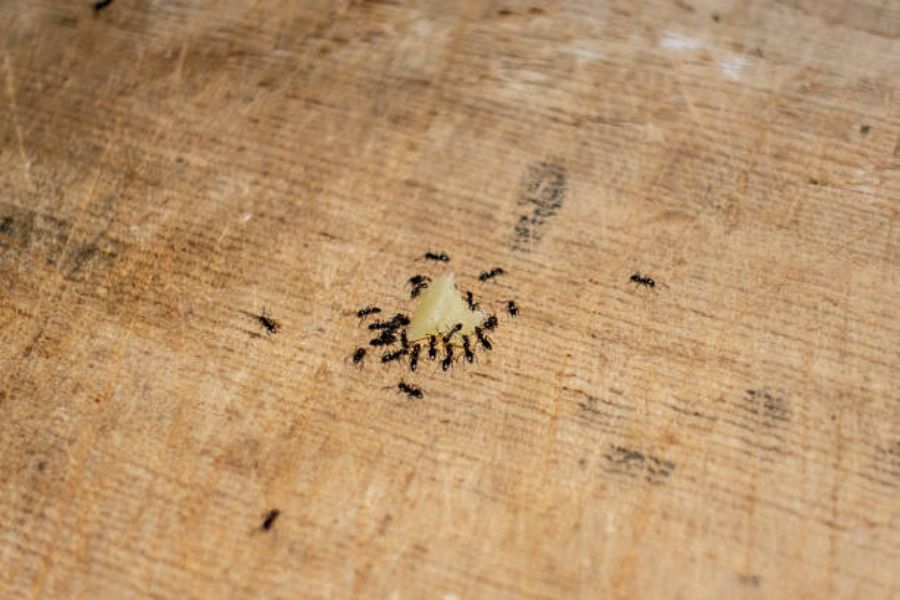
How to Get Rid of Ants
Getting rid of ants effectively requires a multifaceted approach. Here’s a step-by-step method to tackle an infestation:
Identify the Species: Different ant species require different treatment methods. Identifying the species helps ensure that the removal strategy is effective.
Maintain Cleanliness: Regular cleaning is essential to remove any food sources that could attract ants. Store food in airtight containers, wipe down surfaces and ensure crumbs or spills are cleaned promptly.
Erase Ant Trails: Use a mixture of soapy water or vinegar to disrupt pheromone trails, preventing other ants from following the same path.
Use Natural Deterrents: To deter ants, place natural repellents like cinnamon, mint, and vinegar near entry points. Essential oils such as tea tree or peppermint oil can also repel ants when diluted and sprayed along entryways.
Set-Up Ant Baits: Ant baits lure ants with a food-based attractant and a slow-acting insecticide. Foraging ants take the bait back to the nest, where it can kill off the entire colony.
Seek Professional Help: If the infestation persists or is severe, consult a pest control service for advanced treatment options, such as fumigation or chemical treatments.
Does Pest Control Deal with Ants?
Yes, pest control services are equipped to handle ant infestations. Here’s how professional pest control services can help:
Identification and Analysis: Pest control experts can identify the ant species and analyse the infestation severity, enabling them to choose the most effective treatment.
Targeting the Colony: Pest control professionals locate and treat the colony itself, which is essential for eliminating ants at the source.
Effective Treatment: They use a combination of treatment methods, such as baiting, insecticide sprays, and dusting, to thoroughly eliminate ants. Professional treatments are often more effective than DIY methods as they reach hidden areas and prevent future infestations.
Preventive Advice: Pest control specialists also advise preventing future infestations, such as sealing entry points and maintaining cleanliness.
If you have a persistent ant problem, calling a pest control service can be an effective solution.
How Do Ant Baits Work?
Ant baits are one of the most effective tools in an ant control arsenal. Here’s how they work:
Attracting Ants: Ant baits contain a food source that lures foraging ants. Ants collect the bait and return it to their nest, sharing it with other ants.
Slow-Acting Poison: Baits contain a slow-acting insecticide, allowing ants to return it to the colony before the poison takes effect.
Colony-Wide Impact: Ant baits can eliminate the entire population by spreading the poison throughout the colony, including to the queen. This approach is more effective than sprays or traps targeting individual ants.
Professional Application: Pest control professionals often use baits as part of a larger strategy to ensure that all ants in the colony are exposed to the poison.
Baits are ideal for household use, as they minimise the amount of insecticide needed and are effective at targeting the source of the infestation.
When Should I Be Worried About Ants?
Seeing a few ants occasionally may not be a cause for alarm. However, certain situations indicate that an infestation may need immediate attention:
Persistent Sightings Indoors: If ants are consistently present in large numbers, it’s time to take action. Ants can quickly multiply and form colonies in hidden areas.
Structural Damage: Carpenter ants, which burrow into wood to create nests, can significantly damage the wooden structures in your home. Signs of wood damage require professional intervention.
Health Risks: Some ant species, like fire ants, can sting and pose a health risk. If ants are present in high-traffic areas or near food, they can contaminate food and surfaces, posing a potential health hazard.
Damage to Plants or Landscaping: Ants in outdoor areas may damage gardens or create unsightly mounds, indicating a larger colony nearby.
If you observe these signs, addressing the infestation immediately will help prevent more severe problems.
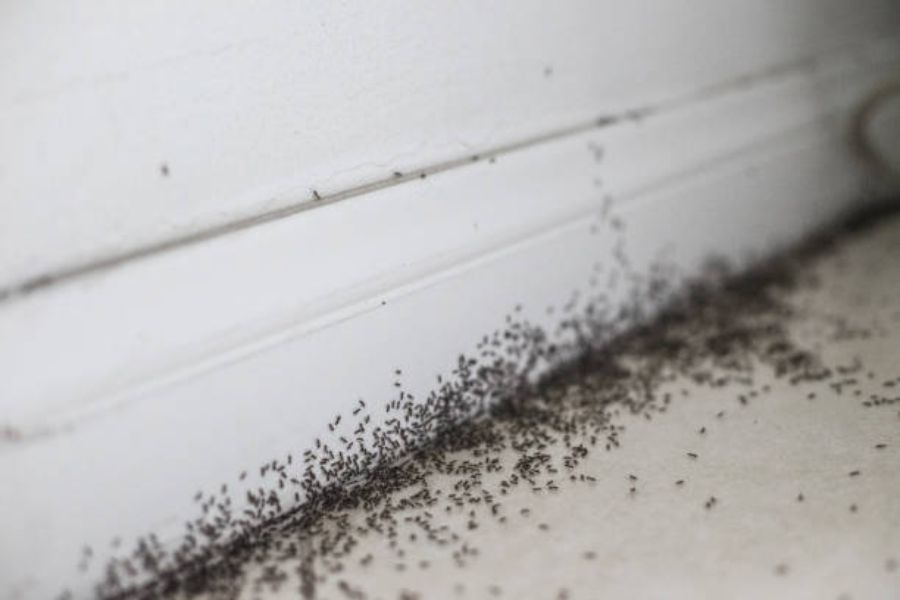
How to Prevent Ants from Entering the House
Preventing ants from entering your home involves creating a barrier and minimising attractants. Here are some strategies:
Seal Entry Points: Use caulk to seal cracks, crevices, and gaps in windows, doors, and foundations. Ants are tiny and can enter through the smallest openings.
Maintain Cleanliness: Regularly clean surfaces, sweep floors and ensure crumbs and spills are promptly wiped up. Keeping your kitchen and dining areas clean will reduce the likelihood of attracting ants.
Remove Water Sources: Ants seek moisture and food. Fix any leaky faucets, pipes, or standing water around your home to reduce their water sources.
Use Natural Deterrents: Place deterrents like cinnamon, coffee grounds, or black pepper around entry points. These natural substances can deter ants without introducing harmful chemicals.
Yard Maintenance: Keep plants, shrubs, and trees trimmed back, as ants often use vegetation to access your home. Remove any fallen fruit or debris that may attract ants.
Implementing these steps can create a less hospitable environment for ants and reduce the likelihood of an infestation.
How Do You Tell if Ants Are Living in Your Walls?
Determining if ants nest in your walls can be challenging but possible. Look for these signs:
Sounds: Ants in walls may make faint tapping or rustling noises, especially at night when the house is quiet.
Visible Trails: Look for trails leading to or from cracks or openings in walls. Ant trails near baseboards or electrical outlets could indicate nesting inside the walls.
Debris and Frass: Carpenter ants leave behind small piles of wood shavings or frass (excrement) near nest openings. This debris may accumulate around baseboards or floor joints.
Faint Smudges: Some ants leave greasy trails on walls due to pheromone trails guiding other ants.
If you suspect ants in your walls, the best approach is to consult a pest control professional who can accurately assess and treat the infestation.
Why Do I Suddenly Have an Ant Infestation?
Ant infestations can appear seemingly out of nowhere for several reasons:
Seasonal Changes: Ants are more active in warmer months, particularly spring and summer, searching for food and water.
Availability of Food and Water: If food or water sources are left accessible, ants will quickly take advantage of these resources.
Nearby Infestations: If your neighbours or nearby areas have infestations, ants may migrate in search of new nesting sites and resources.
Ideal Nesting Conditions: Your home’s warmth and shelter can be perfect for ants to build colonies.
Understanding these factors can help you eliminate attractants and take preventive steps.
How Do I Know If the Ants Are Gone?
Confirming the removal of an ant infestation requires close observation:
Reduced Sightings: If you don’t see any ants in or around your home for several weeks, it’s a good sign they may be gone.
Disrupted Trails: Clean surfaces where trails were previously observed with soapy water to remove pheromones and deter returning ants.
Sealed Entry Points: Inspect entry points regularly after treatment to ensure they remain sealed and free of new activity.
Professional Assessment: A pest control professional can verify that the ants are gone and may offer ongoing maintenance to keep them away.
Following these steps helps ensure the infestation is resolved and unlikely to recur.
Ant infestations can be a nuisance, but with the proper knowledge and approach, you can manage and prevent them effectively. You can maintain a pest-free home and garden by understanding the signs of an infestation, implementing preventive measures, and using both DIY and professional strategies.
